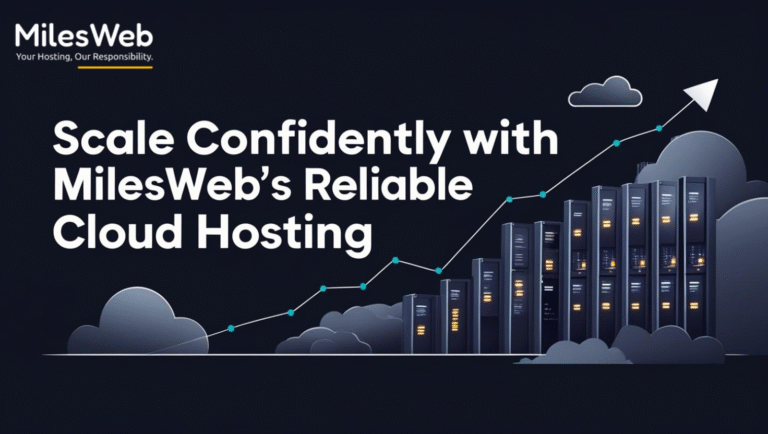How Businesses Can Save Big With Black Friday VPS Hosting Offers

The siren call of massive discounts during the holiday sales rush is the single biggest threat to sound IT decision-making. For any business ready to migrate from restrictive shared environments, securing a Virtual Private Server (VPS) is a milestone. It provides the control and guaranteed resources necessary for scaling. However, treating this moment as a race to the lowest bid rather than a sourcing strategy will inevitably lead to the accumulation of unrecoverable technical debt. Your true objective this season is to acquire highly resilient, performance-guaranteed VPS hosting deals for Black Friday, ensuring the infrastructure selected is built for tomorrow’s demands, not yesterday’s obsolescence.
The sophistication of your deployment requires genuine virtualization. Filtering offers down to pure KVM VPS hosting—the industry benchmark for dedicated resource isolation—is non-negotiable. To successfully future-proof your digital operations, you must look beyond the initial price tag and apply a meticulous, expert-level audit to the provider’s architectural promise. The following three strategic pillars represent the only criteria that matter for long-term operational success.
Three Pillars of Resilient VPS Acquisition
Deconstructing the Hardware Trap: Performance Over Price
The most common Black Friday ploy is hiding outdated components with significant price reductions. The initial savings fail to cover the eventual cost of administrative and performance lag.
- Processor Component History: Never settle for a discount on older CPU generations. A high core count on an obsolete chip results in severe drag on single-thread performance, rendering critical application functions ineffective. Always favor the architectural efficiency of modern enterprise chips (current AMD EPYC or Intel Xeon) instead of just chasing raw core quantity.
- I/O Endurance: Storage speed is the single greatest determinant of application responsiveness. You must demand NVMe. The performance divide between NVMe storage and legacy SATA SSDs will instantly cap your application’s speed, turning slow disk access into a silent threat to user experience.
- Memory Integration: You must confirm the RAM is DDR4 (or newer) and verify the clock speed (MHz). Do not overlook the RAM speed; slow RAM bottlenecks even the fastest CPU, turning a premium processor into a deliberate mistake under heavy traffic spikes.
Defining the Perimeter: The Boundary of Control and Latency
The essence of the VPS value proposition is guaranteed isolation and minimal latency. Any compromise in the service agreement regarding resource limits or connectivity must be treated as a major failure point.
Resource Policing: Confirm that your CPU and RAM allocations are fully hard-allocated, meaning they are physically guaranteed to your VPS. Performance based on unreserved or shared capacity is a structural risk that guarantees collapse during peak loads.
Network Flow: Is the bandwidth truly unlimited? You must audit this claim. Purchasing a limited “transfer quota” could result in excessive supplemental charges and restrict your growth. For any major deployment, guaranteed, unlimited bandwidth availability is a fundamental requirement.
Data Center Proximity: For businesses serving a localized audience, the geographic location of the data center dictates user experience. Latency destroys conversion; ensure the host offers a server location that is closer to your primary customer base.
Management Autonomy: The ability to bypass the network is essential. Does the host provide immediate, direct hardware control (KVM over IP)? This capability to remotely fix kernel issues or reinstall the OS without depending on support is the benchmark for maintaining true high-availability.
The Lifecycle Audit: Vendor Intent and Operational Security
A purchase is an event, but a partnership is a lifecycle. You must audit the true cost of a VPS against two factors: the long-term renewal price and the vendor’s dedication to consistent operational resilience and data permanence.
Auditing the Long-Term Cost: Discounts are often generous, yet the renewal price can become an unforeseen financial burden. Verify the year two rate upfront. A steep price spike after the initial term is not a saving; it’s merely a short-lived lure guaranteeing your costly continuation.
The Vendor’s Commitment to Stability: Any major acquisition needs a partner who stays ahead of risks instead of waiting for problems to show up. MilesWeb consistently maintains superior operational standards. Their priority is not mere equipment provisioning; they commit to high-caliber infrastructure that drives low latency and maintains peak performance under demanding, long-term conditions.
Data Integrity: The Absolute Standard
Beyond core processing speed, your greatest risk management priority must be data integrity. A quality host integrates risk mitigation into its core offering. MilesWeb upholds data integrity by offering daily backups, a mandatory feature for preventing catastrophic operational failure.
Concluding Insights
Your purchase must be an investment in longevity, not a reaction to a price drop. Real value stems from scalable capacity and guaranteed resource delivery, not the percentage of the initial discount. The lifecycle of a VPS should span years, not months.
The strategic error made by most businesses is optimizing for the first bill instead of minimizing the five-year Total Cost of Ownership (TCO).
A cheap, low-end server requires constant patching, upgrades, and migrations, which translates into administrative overhead that immediately outweighs the initial savings. Your priority must be the host that provides absolute certainty. MilesWeb ensures that the platform beneath your application will remain stable, secure, and ready for whatever demands your growth brings.





